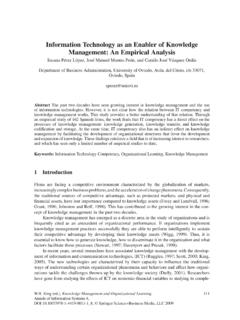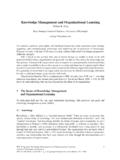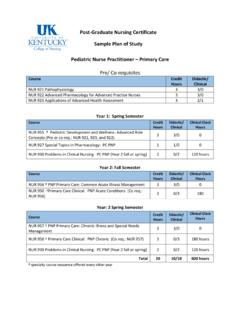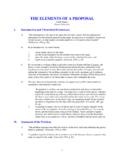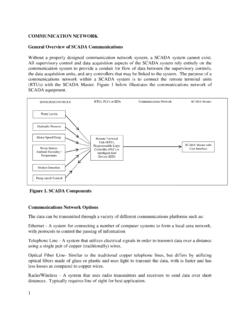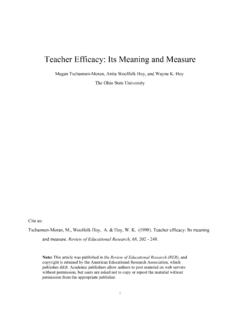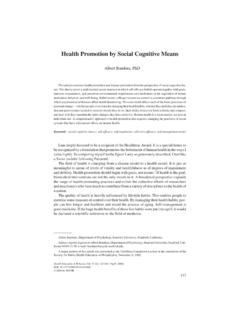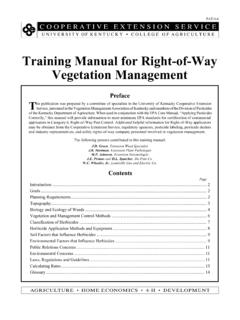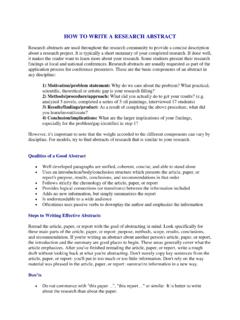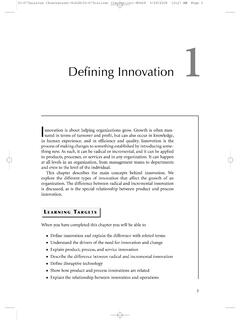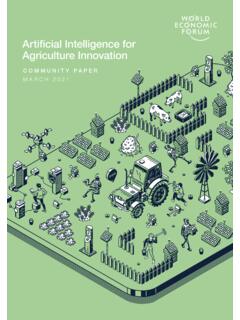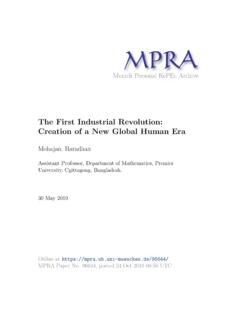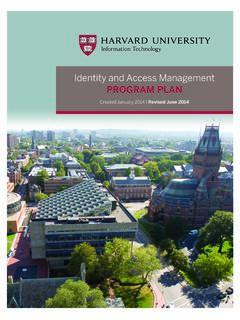Transcription of Knowledge Management and Organizational Learning
1 For centuries, scientists, philosophers and intelligent laymen have been concerned about creating, acquiring, and communicating Knowledge and improving the re-utilization of Knowledge . However, it is only in the last 15 20 years or so that a distinct field called Knowledge Management (KM) has emerged. KM is based on the premise that, just as human beings are unable to draw on the full potential of their brains, organizations are generally not able to fully utilize the Knowledge that they possess. Through KM, organizations seek to acquire or create potentially useful Knowledge and to make it available to those who can use it at a time and place that is appropriate for them to achieve maximum effective usage in order to positively influence Organizational performance.
2 It is generally believed that if an organization can increase its effective Knowledge utilization by only a small percentage, great benefits will result. Organizational Learning (OL) is complementary to KM. An early view of OL was ..encoding inferences from history into routines that guide behavior (Levitt and March, 1988 , p. 319). So, OL has to do with embedding what has been learned into the fabric of the organization. 1 The Basics of Knowledge Management and Organizational Learning To understand KM and OL, one must understand Knowledge , KM processes and goals and Knowledge Management systems (KMS). Knowledge Knowledge is often defined as a justified personal belief. There are many taxonomies that specify various kinds of Knowledge .
3 The most fundamental distinction is between tacit and explicit Knowledge . Tacit Knowledge inhabits the minds of people and is (depending on one s interpretation of Polanyi s (1966) definition) either impossible, or difficult, to articulate. Most Knowledge is initially tacit in nature; it is laboriously developed over a long period of time through trial and error, and it is underutilized because the organization does not know what it knows (O Dell and Grayson, 1998 , p. 154). Some Knowledge is embedded in business processes, activities, and relationships that have been created over time through the implementation of a continuing series of improvements. Knowledge Management and Organizational Learning William R. King Katz Graduate School of Business, University of Pittsburgh King (ed.)
4 , Knowledge Management and Organizational Learning , 3 Annals of Information Systems 4, DOI , Springer Science+Business Media, LLC 200944 Knowledge Management and Organizational Learning Explicit Knowledge exists in the form of words, sentences, documents, organized data, computer programs and in other explicit forms. If one accepts the useful difficult-to-articulate concept of tacit Knowledge , a fundamental problem of KM is to explicate tacit Knowledge and then to make it available for use by others. One can also distinguish among know what, know how and know why levels of Knowledge . Know what, Knowledge specifies what action to take when one is presented with a set of stimuli. For instance, a salesperson who has been trained to know which product is best suited for various situations has a know-what level of Knowledge .
5 The next higher level of Knowledge is know-how , knowing how to decide on an appropriate response to a stimulus. Such Knowledge is required when the simple programmable relationships between stimuli and responses, which are the essence of know-what Knowledge , are inadequate. This might be the case, for instance, when there is considerable noise in symp-tomatic information so that the direct link between symptoms and a medical diagnosis is uncer-tain. Know how -type Knowledge permits a professional to determine which treatment or action is best, even in the presence of significant noise. The highest level of Knowledge is know-why Knowledge . At this level, an individual has a deep understanding of causal relationships, interactive effects and the uncertainty levels associ-ated with observed stimuli or symptoms.
6 This will usually involve an understanding of underly-ing theory and/or a range of experience that includes many instances of anomalies, interaction effects, and exceptions to the norms and conventional wisdom of an area. Knowledge Management Processes and Goals Knowledge Management is the planning, organizing, motivating, and controlling of people, proc-esses and systems in the organization to ensure that its Knowledge -related assets are improved and effectively employed. Knowledge -related assets include Knowledge in the form of printed documents such as patents and manuals, Knowledge stored in electronic repositories such as a best-practices database, employees Knowledge about the best way to do their jobs, Knowledge that is held by teams who have been working on focused problems and Knowledge that is embed-ded in the organization s products, processes and relationships.
7 The processes of KM involve Knowledge acquisition, creation, refinement, storage, transfer, sharing, and utilization. The KM function in the organization operates these processes, develops methodologies and systems to support them, and motivates people to participate in them. The goals of KM are the leveraging and improvement of the organization s Knowledge assets to effectuate better Knowledge practices, improved Organizational behaviors, better deci-sions and improved Organizational performance. Although individuals certainly can personally perform each of the KM processes, KM is largely an Organizational activity that focuses on what managers can do to enable KM s goals to be achieved, how they can motivate individuals to participate in achieving them and how they can create social processes that will facilitate KM success.
8 Social processes include communities of practice self-organizing groups of people who share a common interest and expert networks networks that are established to allow those 3334353637383940414243444546474849505152 5354555657585960616263646566676869707172 73 Knowledge Management and Organizational Learning 5574757677787980818283848586878889909192 9394959697989910010110210310410510610710 8109110with less expertise to contact those with greater expertise. Such social processes are necessary because while Knowledge initially exists in the mind of an individual, for KM to be successful, Knowledge must usually be transmitted through social groups, teams and networks. Therefore, KM processes are quite people-intensive, and less technology-intensive than most people might believe, although a modern Knowledge -enabled enterprise must support KM with appropriate information and communications technology (King, 2008).
9 Knowledge Management Systems Knowledge Management systems (KMS) are applications of the organization s computer-based communications and information systems (CIS) to support the various KM processes. They are typically not technologically distinct from the CIS, but involve databases, such as lessons learned repositories, and directories and networks, such as those designed to put Organizational participants in contact with recognized experts in a variety of topic areas. A significant difference between many Knowledge Management systems and the organiza-tion s CIS is that the KMS may be less automated in that they may require human activity in their operation. While information systems typically require that humans make choices in the design phase and then operate automatically, KMS sometimes involve human participation in the opera-tion phase.
10 For instance, when a sales database is designed, people must decide on its content and structure; in its operational phase, it works automatically. When a lessons learned Knowledge repository is created, people must make all of the same design choices, but they must also partici-pate in its operational phase since each Knowledge unit that is submitted for inclusion is unique and must be assessed for its relevance and important. 2 Organizational Learning There are various ways to conceptualize the relationship between Knowledge Management and Organizational Learning . Easterby-Smith and Lyles (2003) consider OL to focus on the process, and KM to focus on the content, of the Knowledge that an organization acquires, creates, processes and eventually uses. Another way to conceptualize the relationship between the two areas is to view OL as the goal of KM.
